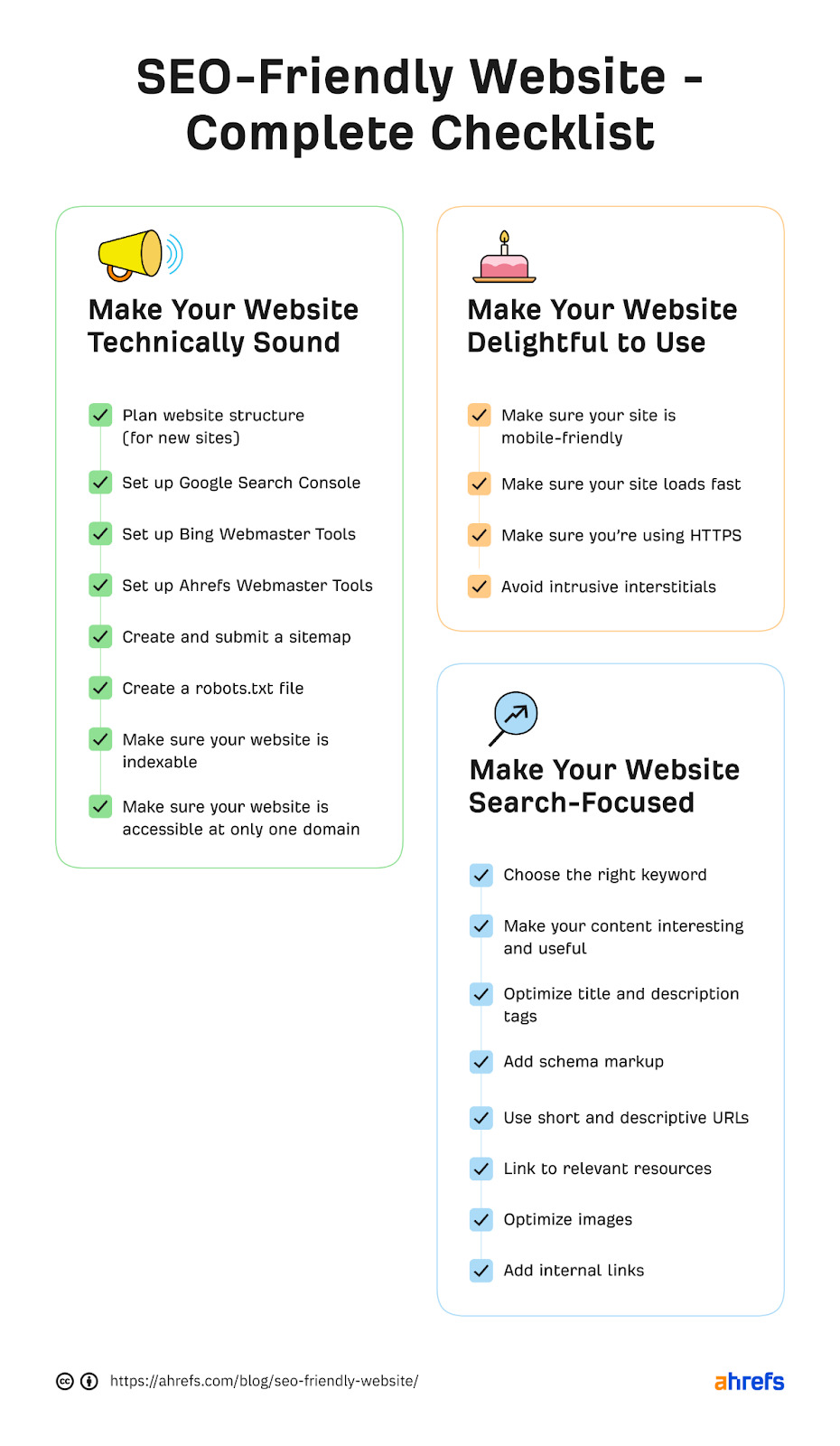The Bernard Rodriguez Journal
Exploring the latest trends and stories in news and lifestyle.
Designing for the Click: Crafting SEO-Friendly Experiences
Unlock the secrets of crafting SEO-friendly designs that captivate clicks and boost your online presence! Explore new strategies today!
10 Essential Elements of SEO-Friendly Web Design
Creating a website that is both visually appealing and SEO-friendly involves several critical elements. First and foremost, a well-structured URL is essential. Clean, descriptive URLs that reflect the page content not only enhance user experience but also improve search engine rankings. For more details on effective URL structuring, visit Moz. Additionally, incorporating responsive design is crucial as it ensures your site is accessible on various devices, which in turn boosts your search visibility. Google prioritizes mobile-responsive websites, so adopting a mobile-first approach is recommended.
Another important aspect is the use of header tags (H1, H2, H3) to organize content hierarchically. This not only improves readability but also allows search engines to understand the context of your content better. Including relevant keywords in these headers can enhance your page's SEO. Moreover, optimizing images by using descriptive alt text can improve accessibility and contribute to higher rankings in image search results. For more insights on optimizing images, check out Search Engine Journal.

How to Optimize User Experience for Better Click-Through Rates
Optimizing user experience (UX) is crucial for achieving better click-through rates (CTR) on your website. A seamless UX involves intuitive navigation, fast loading times, and responsive design, which can significantly impact how users interact with your content. According to Nielsen Norman Group, a well-designed interface can improve user satisfaction and retention, leading to higher CTR. To get started, perform an audit of your current UX by evaluating site speed, assessing mobile compatibility, and ensuring that every link leads to relevant and engaging content.
Additionally, consider implementing call-to-action (CTA) buttons that are not only visually appealing but also strategically placed throughout your content. Research shows that effective CTAs can increase conversion rates significantly. Utilize A/B testing to determine which designs and placements work best for your audience. For more insights, check out this guide from WordStream on effective CTAs. Remember, a positive UX not only boosts your CTR but also encourages users to explore more of your content, ultimately enhancing your website's overall performance.
What Are the Key Principles of Designing for SEO Success?
Designing for SEO success involves a thorough understanding of both user experience and search engine requirements. One of the key principles is mobile-friendliness. With the increasing number of users accessing the internet via smartphones, making your website responsive is essential. This ensures that your site adjusts to different screen sizes, improving accessibility and user engagement. Additionally, page speed is crucial; optimizing images and minimizing code can significantly enhance load times. For guidance on speeding up your website, refer to Google's PageSpeed Insights.
Another important principle is site structure and navigation. A well-organized site helps both users and search engines understand your content better. Implementing a clear hierarchy using header tags (H1, H2, etc.) encourages better crawling and indexing. Furthermore, utilizing internal links strategically can boost SEO by increasing the time users spend on your site. For more on optimizing navigation, check out Moz's Beginner's Guide to SEO. By focusing on these foundational principles, you can significantly enhance your site's visibility and effectiveness in search engine results.